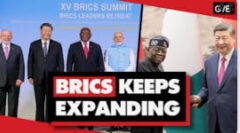Contents
Have you noticed that five-letter word that has been constantly appearing in the news and on social media lately: BRICS Expansion. This acronym, which has been sitting in a corner for years, has become a global storm in the last few years. It is expanding with the participation of new countries, establishing its own bank, and most importantly, attracting the attention of the whole world with its discourses challenging the dominance of the US dollar. So, what is really happening? Is BRICS a secret conspiracy against the West, or is it the search for a legitimate voice on the world stage by developing countries, namely the “Global South”?
BRICS expansion is a reflection of the search for an alternative global order against Western-centered institutions. In particular, goals such as moving away from dollar dominance, transitioning to a multipolar world order, and economic solidarity among developing countries form the basis of this expansion step. The invitation to membership of countries such as Argentina, Egypt, Saudi Arabia, Ethiopia, the United Arab Emirates, and Iran at the 2023 Johannesburg Summit is one of the most concrete indicators of this intention.
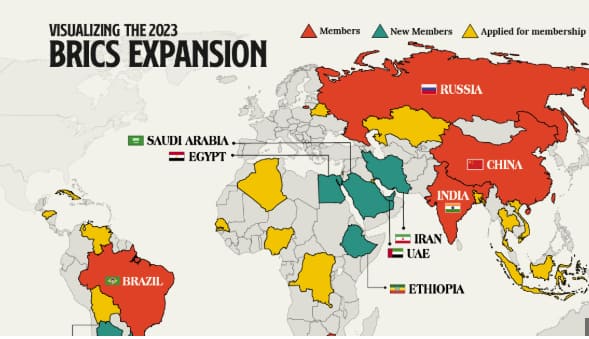
The economic weight and geopolitical influence of this union could increase significantly with the new members. The potential of these countries, especially in the fields of energy, infrastructure and trade, has the potential to create new synergies within BRICS. However, there are also some difficulties in this expansion. Political differences between countries, differences in economic stability and problems that may occur in joint decision-making processes will test the effectiveness of BRICS.
Once Rising Stars: How They Met
It all started in 2001 with a report by Jim O’Neill, an economist at the giant investment bank Goldman Sachs. O’Neill proposed that there were four major emerging markets that would shape the global economy of the 21st century: Brazil, Russia, India and China. He created the catchy acronym “BRIC” based on the first letters of these countries. In other words, BRIC was not a political alliance at first, but an economic term aimed entirely at investors.
However, these four countries liked this “rising star” role assigned to them so much that they decided to turn this economic term into reality. They began to come together to cooperate more closely with each other and create a common voice on global issues, and held their first official summit in 2009. In 2010, with the addition of South Africa to the group, the bloc took its current name: BRICS.
The main aim of BRICS in its early years was not to rebel against the existing world order, but to have a greater say in that order. They wanted representation in international institutions such as the IMF and the World Bank, which were dominated by the US and Europe, in proportion to their economic size. Increasing trade and investment among themselves was also one of their most important goals.

BRICS Expansion and the Famous Plus (+)
The real big change came with the major expansion move in recent years. With the invitation of countries such as Saudi Arabia, the United Arab Emirates, Iran, Egypt and Ethiopia to the group as of 2024, BRICS has virtually changed its shell. With this move, BRICS is no longer just a club of “emerging economies”; it has transformed into a huge geopolitical bloc that includes the world’s most important energy producers and countries controlling strategic waterways.
Today, this new structure, also known as “BRICS+”, represents a much larger portion of the world’s population and global economy. Bringing together population giants such as China and India, energy giants such as Russia, Saudi Arabia and the UAE, and agricultural giants such as Brazil, this structure has become a global power that cannot be ignored anymore. That is why BRICS, once the subject of investor reports, is today one of the most debated foreign policy issues in Washington.
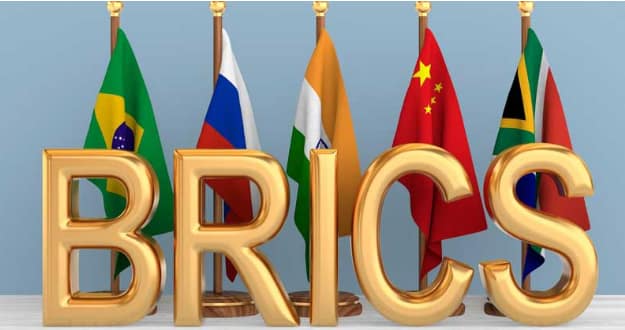
Economic Union: The Dream of “De-dollarization”
With the BRICS expansion, the group’s goals have become more ambitious and clearer. The aim is no longer just to have a greater say in the current system, but to build an alternative, new world order to that system. Their basic philosophy is based on the idea that the “unipolar” world order established after the Cold War, with the US at its center, has become obsolete and that a “multipolar” world must now be adopted.
The most concrete step towards this goal was the New Development Bank (NDB), which they established in 2014. This institution, often referred to as the “BRICS Bank,” was designed as an alternative to the Western-controlled World Bank and IMF. Its aim is to finance infrastructure and sustainable development projects in member countries, but not to impose the harsh political conditions and austerity policies that usually accompany IMF loans.
And now we come to the most talked-about, most ambitious goal: “Dedollarization.” Although it sounds complicated, its meaning is simple: to reduce the world’s dependence on the US dollar. As you know, today a large part of international trade (especially strategic goods like oil) is done in dollars, and countries hold dollars as reserves in their central banks. This gives the US incredible global power.
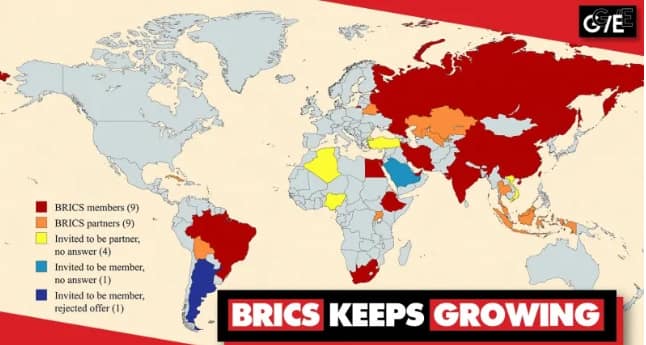
Common Currency and Economic Cooperation
So why are the BRICS countries so bothered by the dollar? Because the dominance of the dollar allows the US to use the global financial system as a weapon. The US can impose sanctions on any country it wants, remove it from the dollar system and paralyze its economy (the sanctions imposed on Russia are the most recent example). Here, the BRICS members want to establish an alternative system in which they will trade in their own currencies in order to protect themselves from this “dollar weapon” and to get rid of the economic pressure of the US.
In this context, the idea of a “common BRICS currency” is frequently discussed together with BRICS expansion. However, due to the huge economic differences between the members (for example, the economies of China and Ethiopia), this is a very difficult and long-term goal. Their current more realistic plan is to eliminate the dollar in trade among themselves and use their own local currencies (yuan, rupee, ruble, etc.) directly. Especially with the addition of an oil giant like Saudi Arabia to the group, the possibility of using non-dollar currencies in oil trade makes the dream of “dedollarization” more realistic than ever.
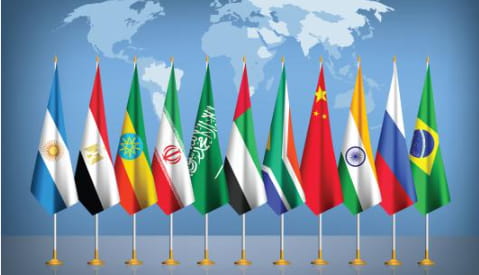
BRICS Expansion: Means for the US and World
The rise of BRICS and its ambitious goals are naturally being closely followed in Washington. While US officials have publicly downplayed the threat by describing BRICS as “a group of very different and contradictory groups,” it is no secret that behind closed doors this situation is seen as one of the most serious long-term challenges to the US’s global leadership.
The BRICS expansion raises the question of whether we are entering a period in which the world is once again divided into blocs as it was during the Cold War. On one side, the G7, G20 and Western alliance led by the US, and on the other, a BRICS bloc with looser ties led by China and Russia. However, this new competition seems to be based on economic influence, technological superiority and who will set the rules of the global system, rather than a strictly ideological distinction (communism vs. capitalism) as in the past.
The most concrete threat to the US is the deterioration of the status of the dollar. The dollar as a reserve currency allows the US to borrow much more cheaply and keep its economy afloat despite huge budget deficits. The decline in the use of the dollar in global trade means that this privilege is weakened. This will not happen overnight, but even over decades, it could have serious effects on the US economy and global power.

Obstacles to the BRICS Expansion Dream!
However, BRICS also faces serious obstacles. The bloc’s greatest weakness is its internal conflicts of interest and rivalries. For example, there are serious border disputes and strategic rivalries between the two largest members of the group, China and India. In addition, it is a big question mark how much democracies like Brazil and India can maintain a common vision with authoritarian regimes like China and Russia. These internal divisions make it difficult for the bloc to act as a single fist.
The most important result of this equation is the rise of the “Global South.” The BRICS expansion is the clearest indication that developing countries in Asia, Africa and Latin America no longer want to play by the rules imposed on them by the West. They now want to determine their own roles on the world stage, build their own institutions and have a greater say in global affairs. BRICS has become the strongest platform for this collective will.
Ultimately, this movement is based on a challenge to the current US-led, dollar-centered system and a desire to establish a multipolar world order that is believed to be more equitable. With its own development banks and its search for an alternative to the dollar, this is not just a rhetoric, but also a project that is progressing with concrete steps.
Of course, BRICS has its own difficulties and contradictions, and the reign of the dollar will not end overnight. But one thing is certain: the BRICS expansion is the clearest sign that the balance of power in the world order is shifting from West to East and from North to South. In order to understand this historic transformation we are living through, we will need to continue to follow the steps of this union closely.
